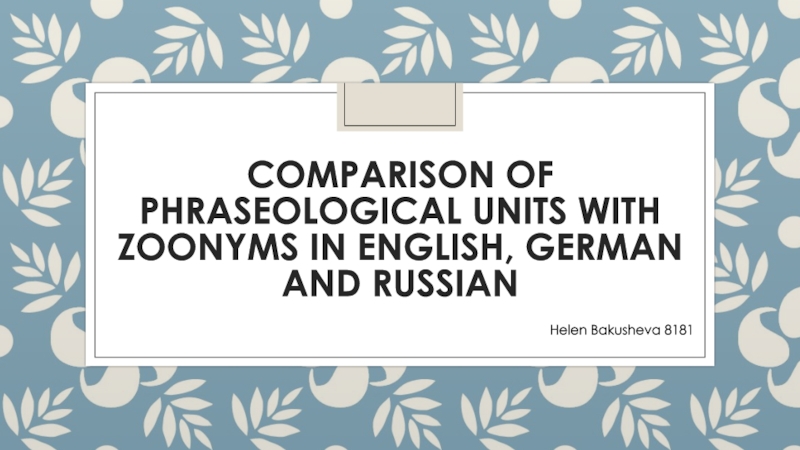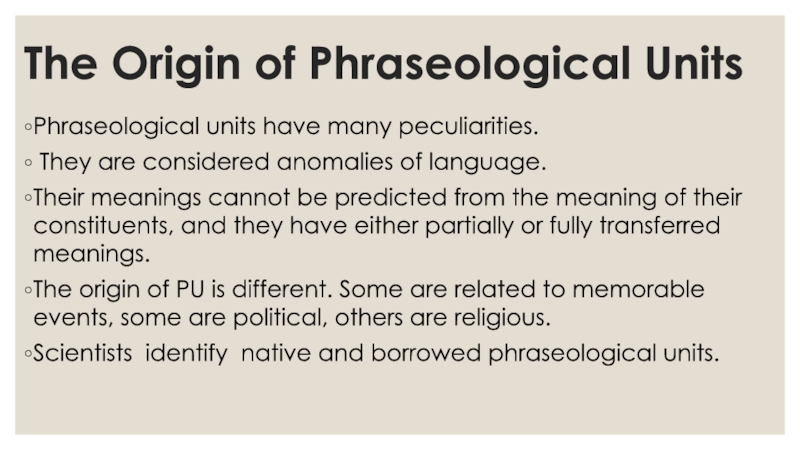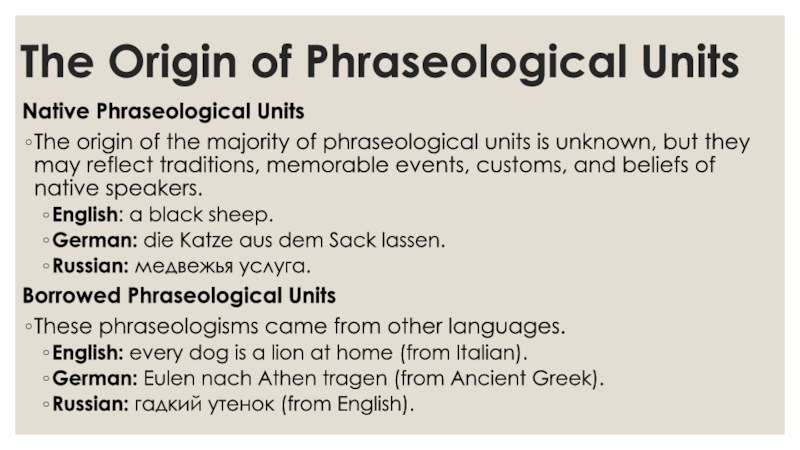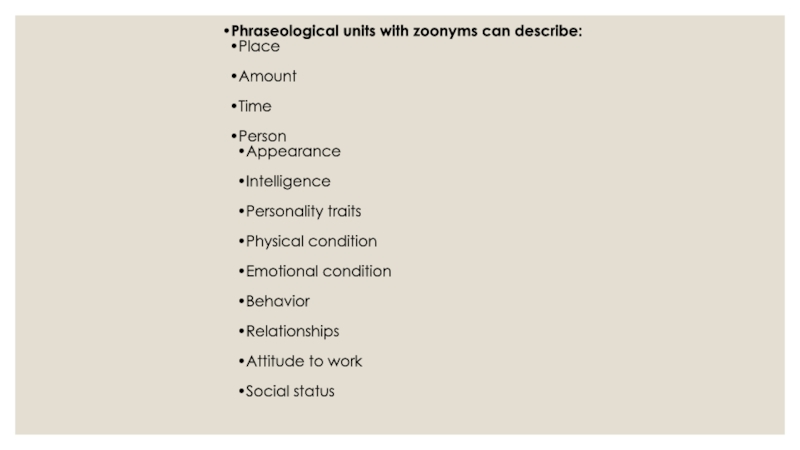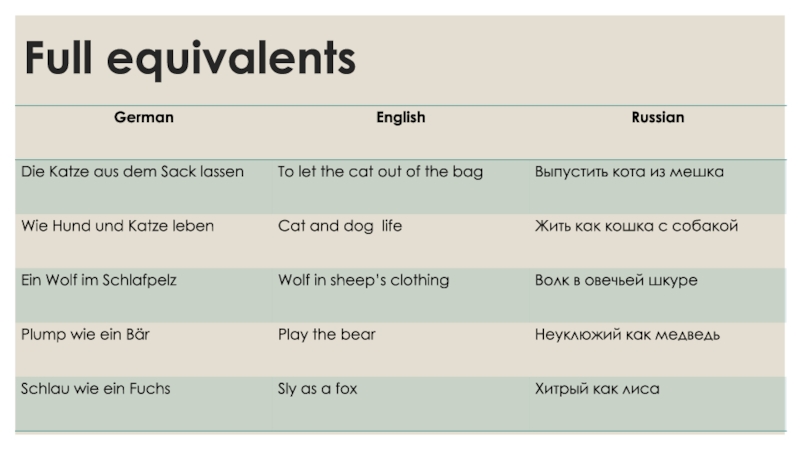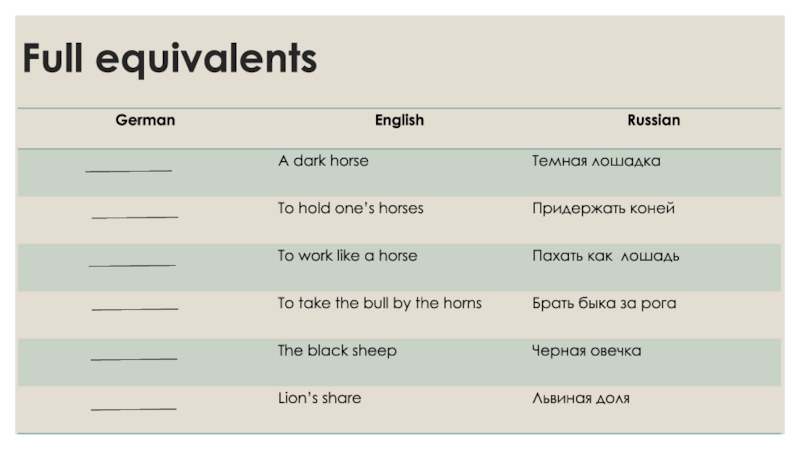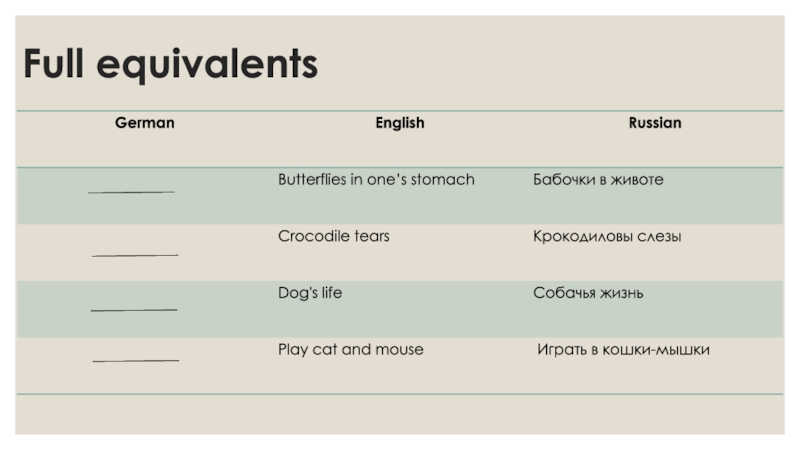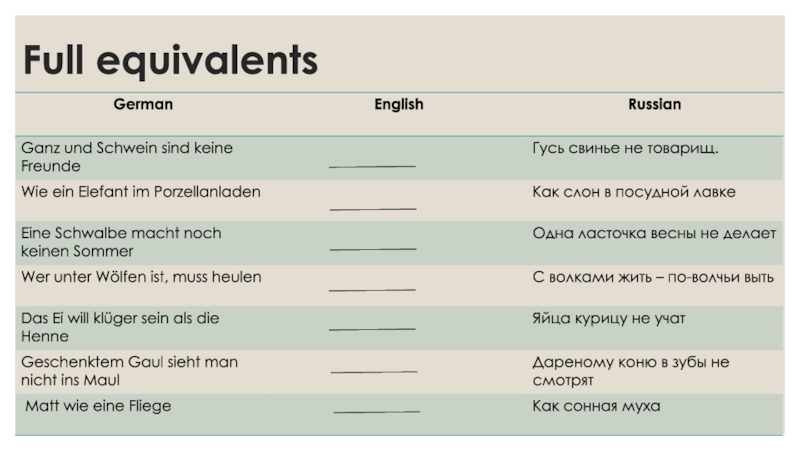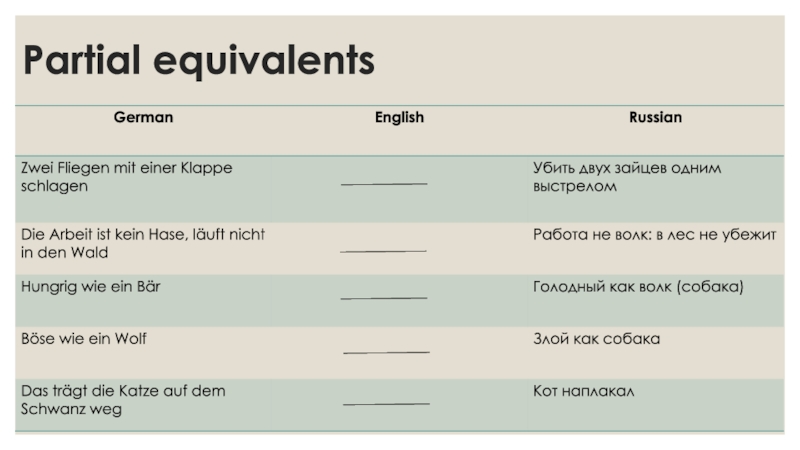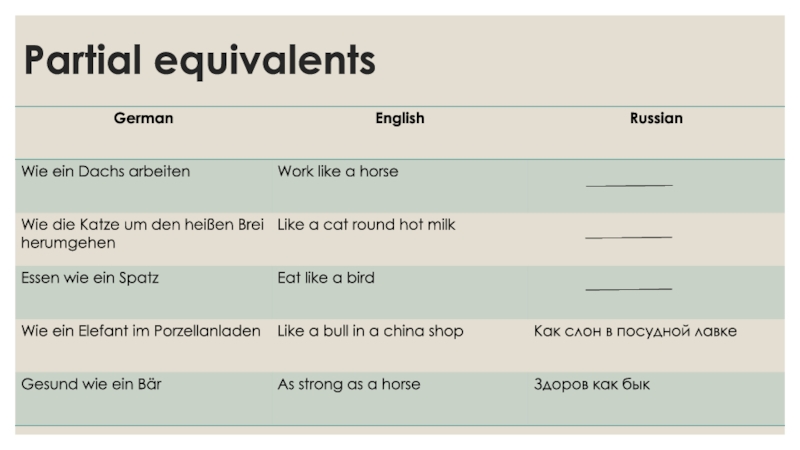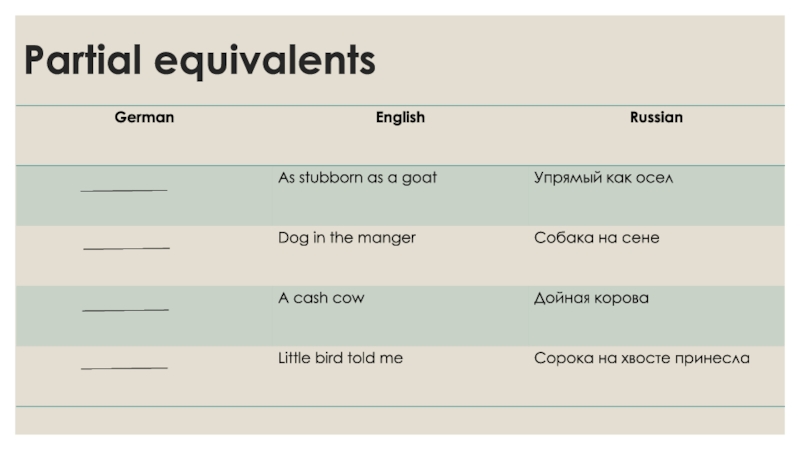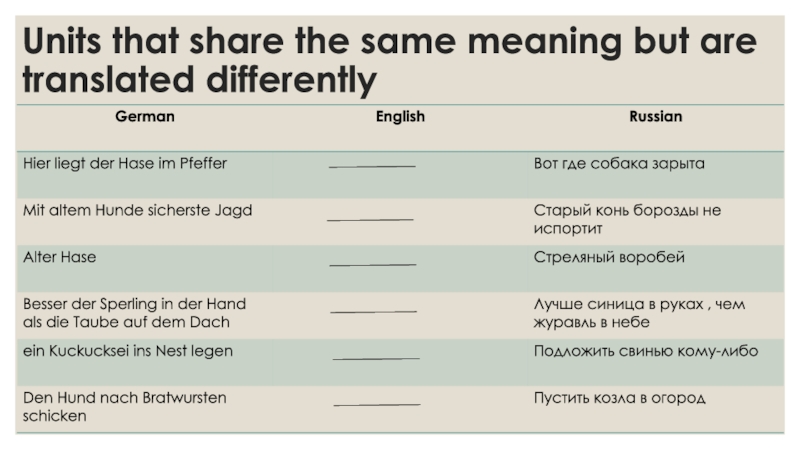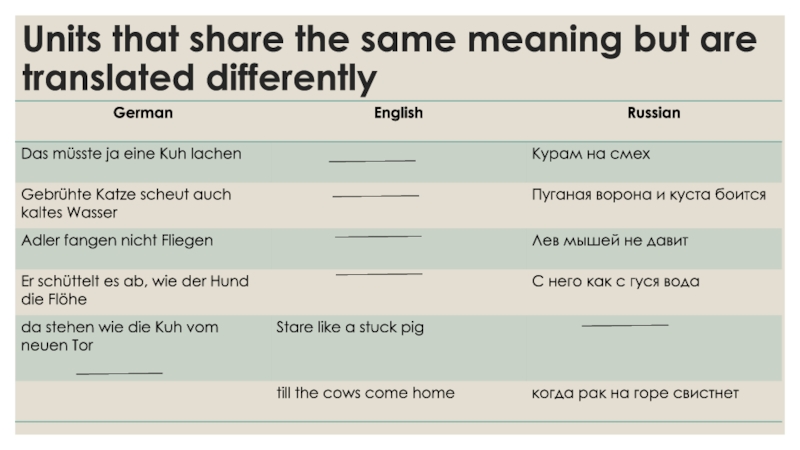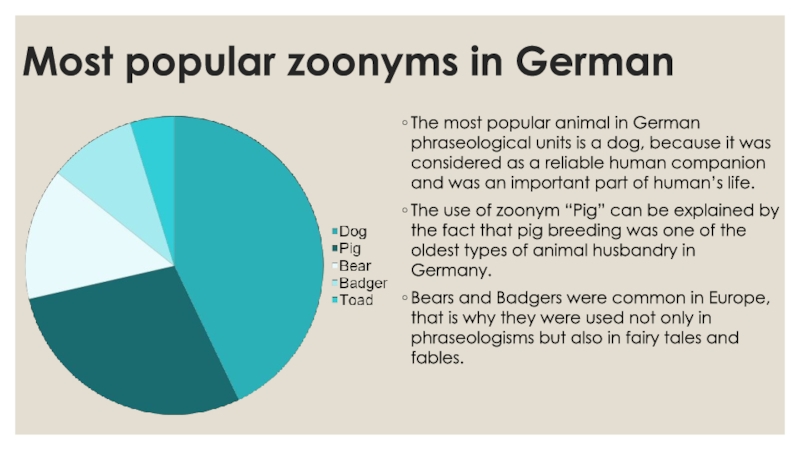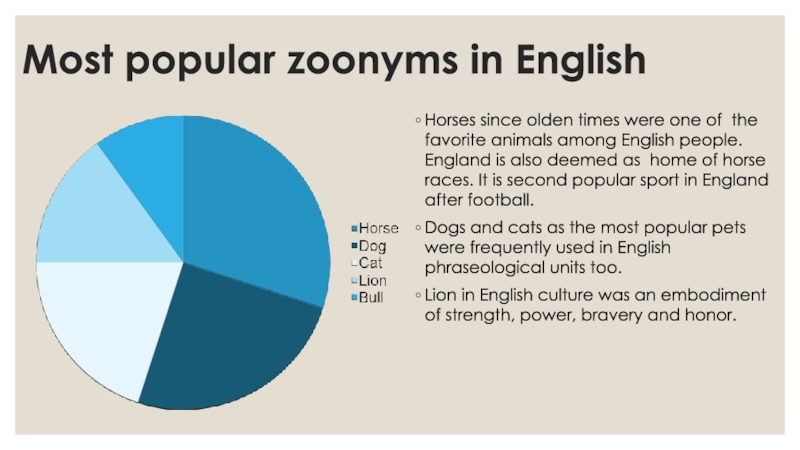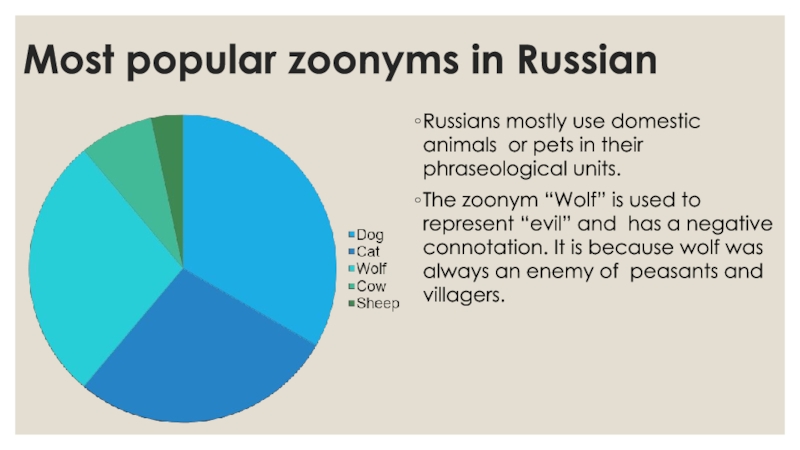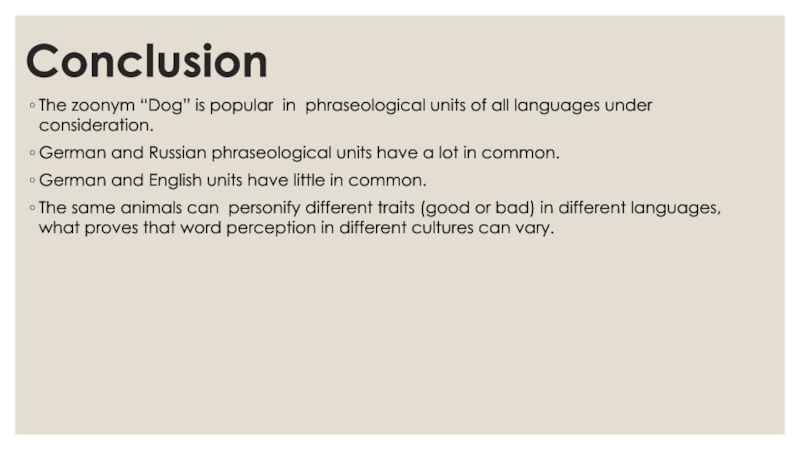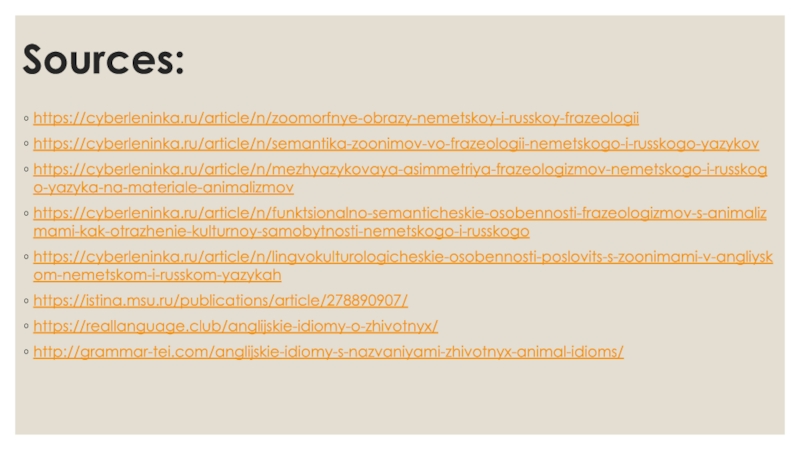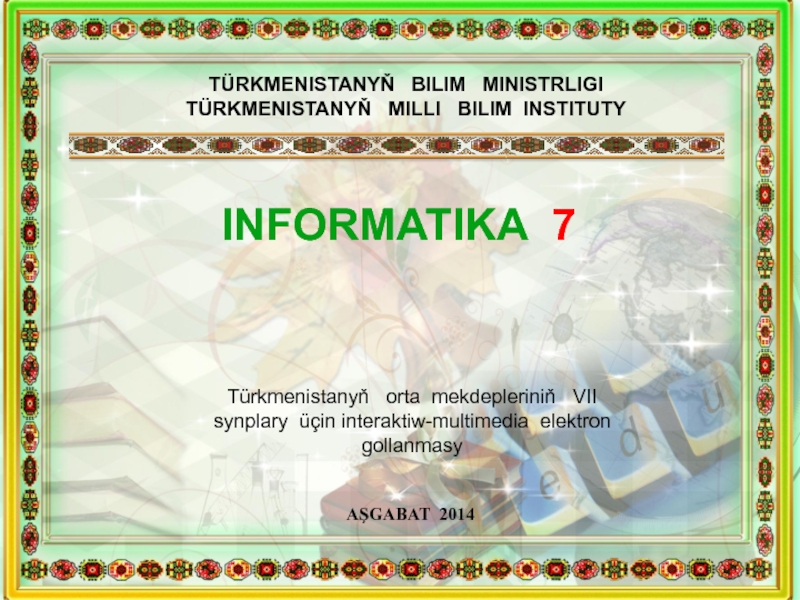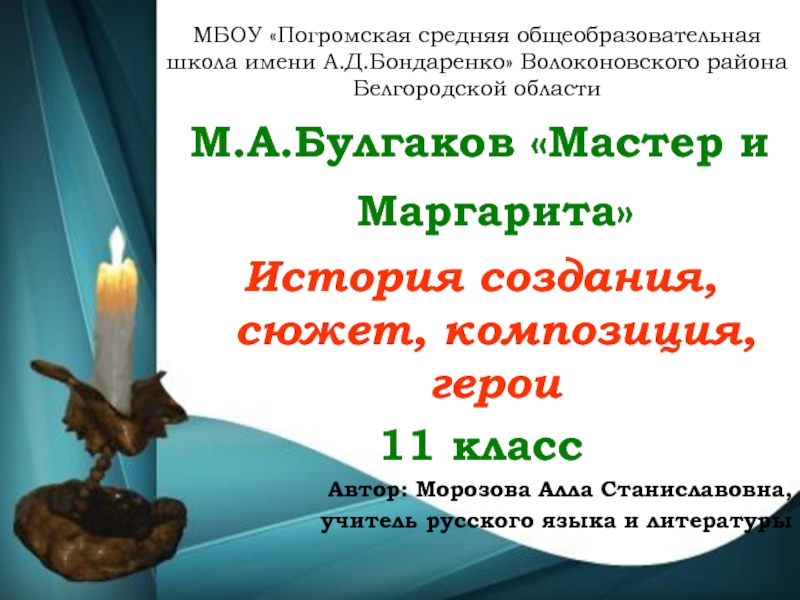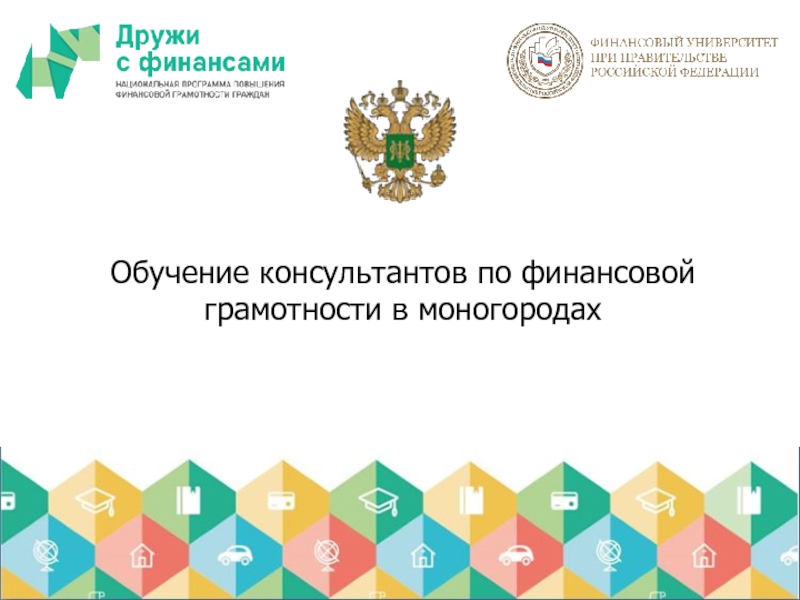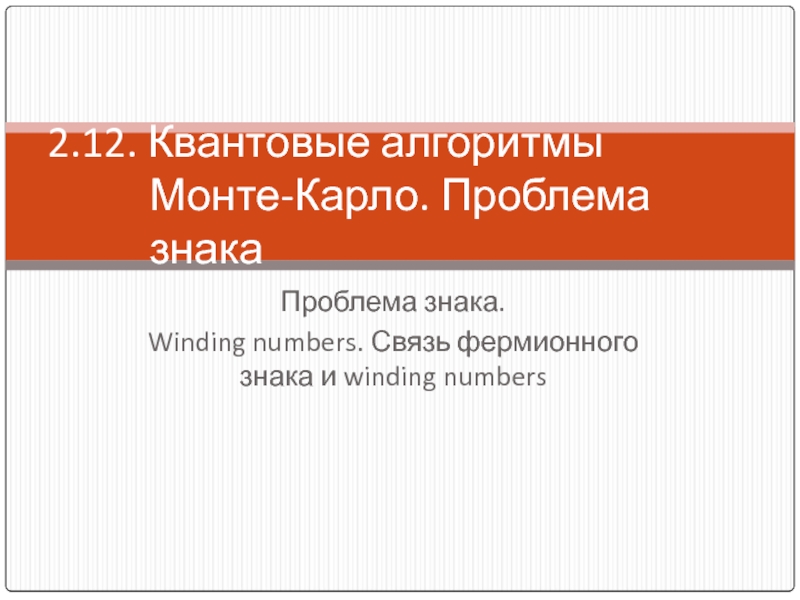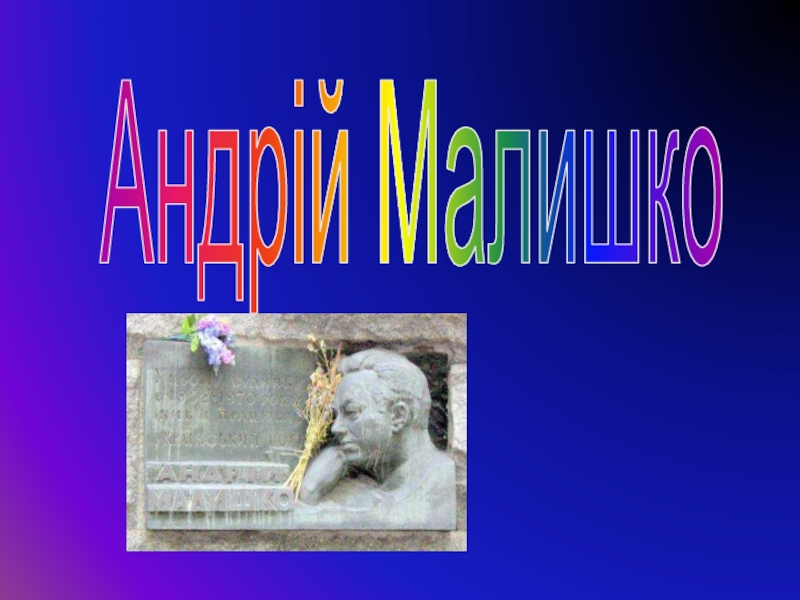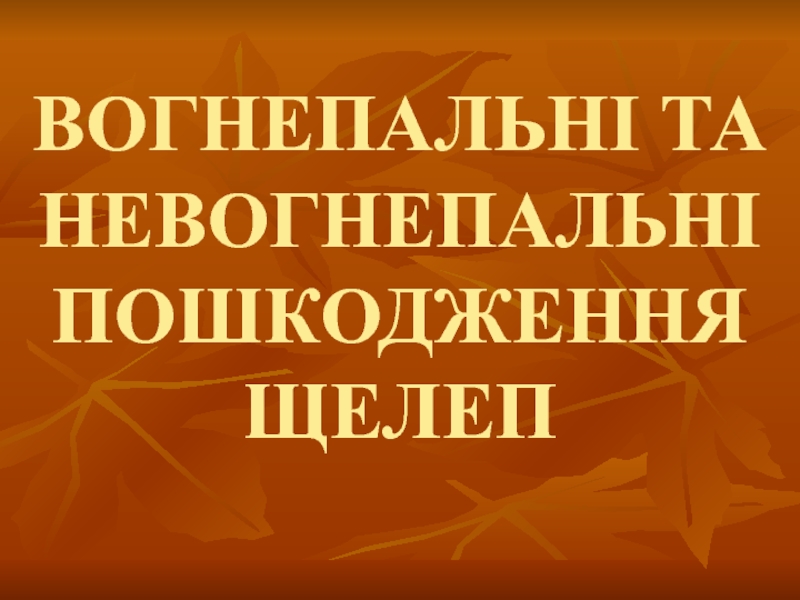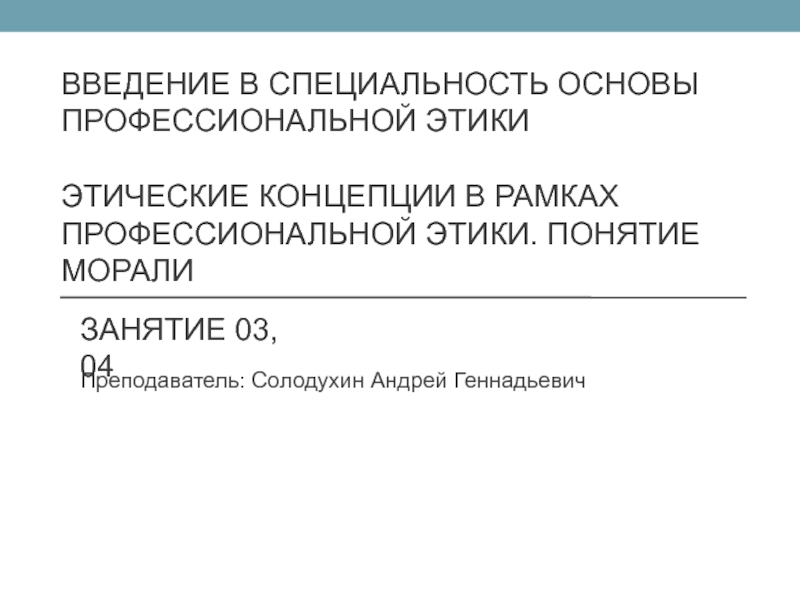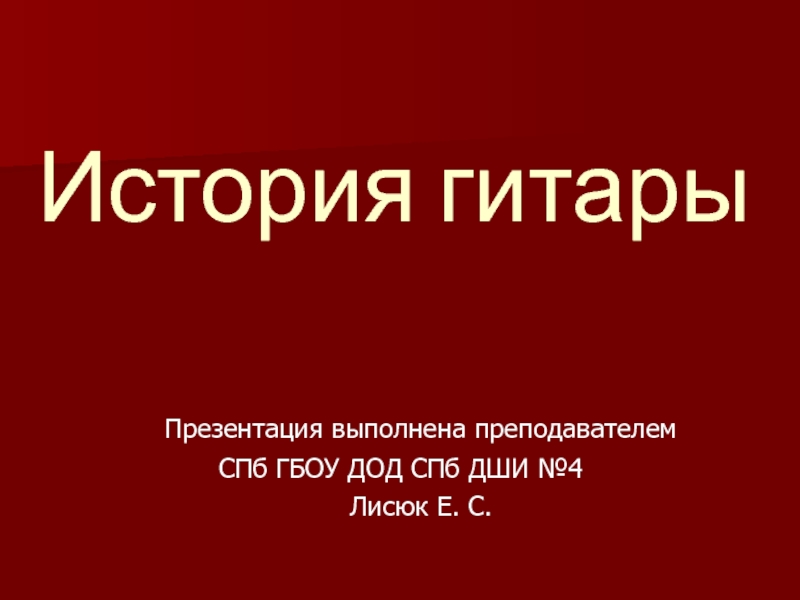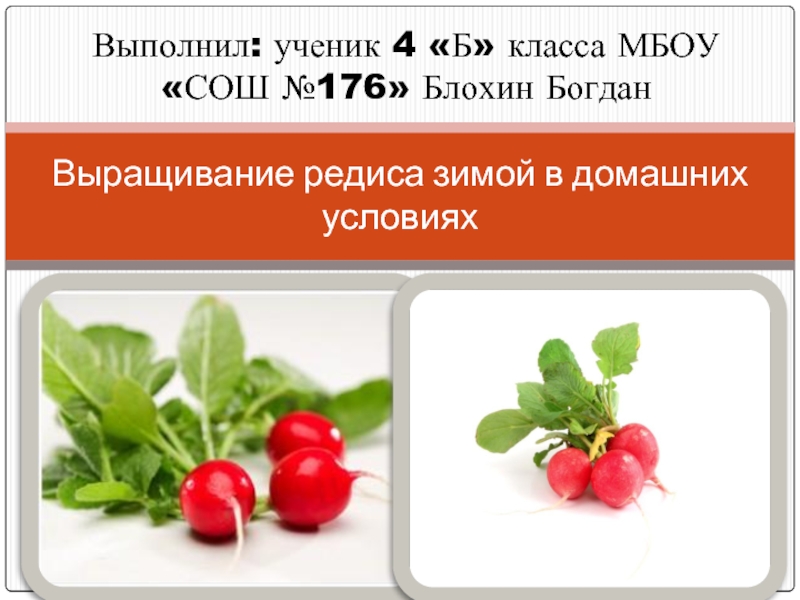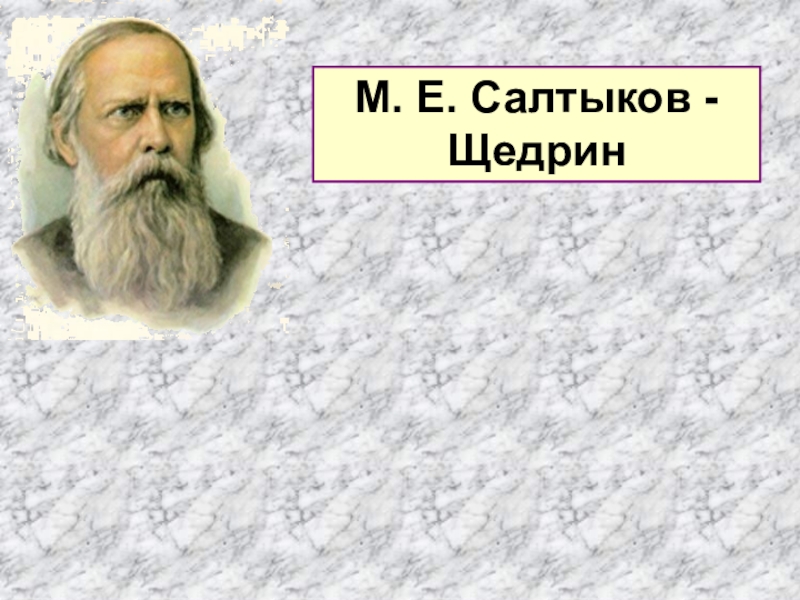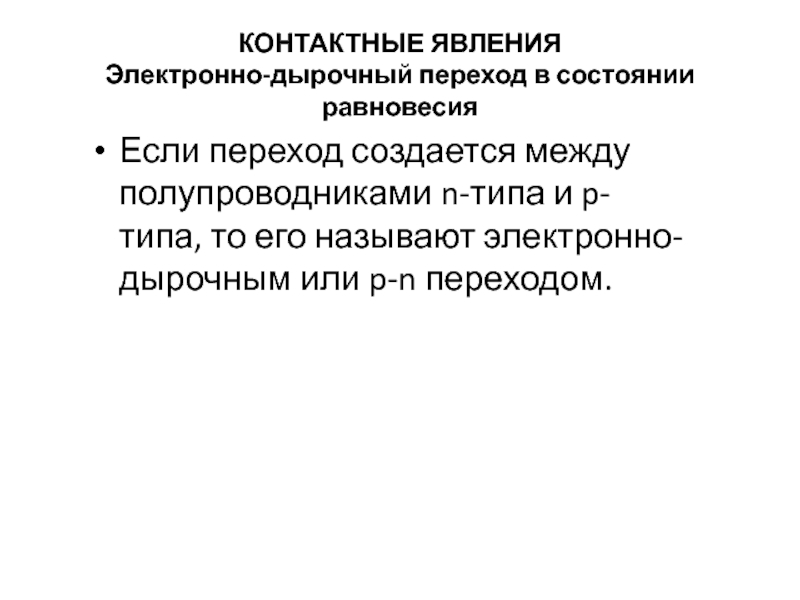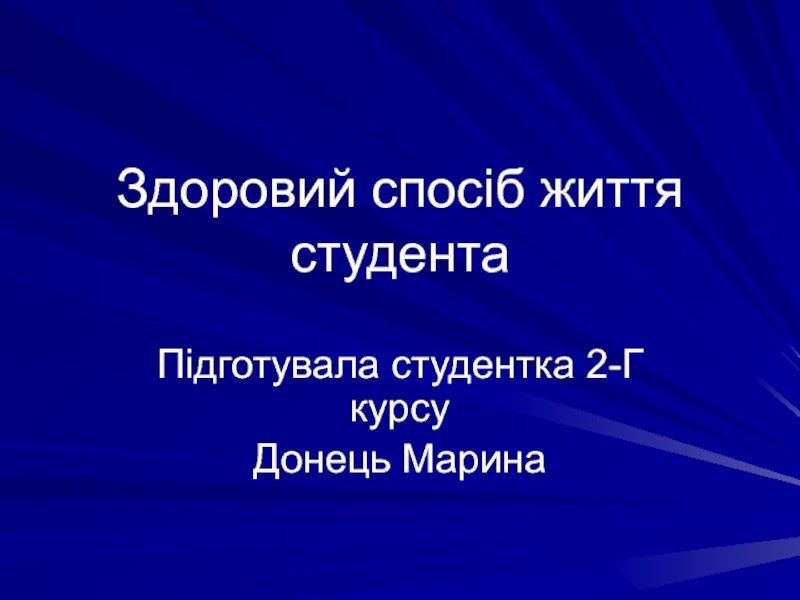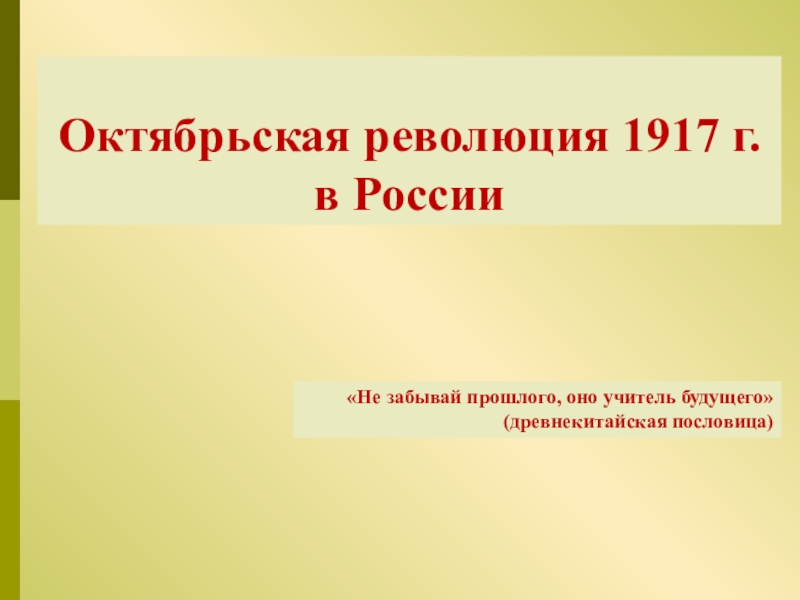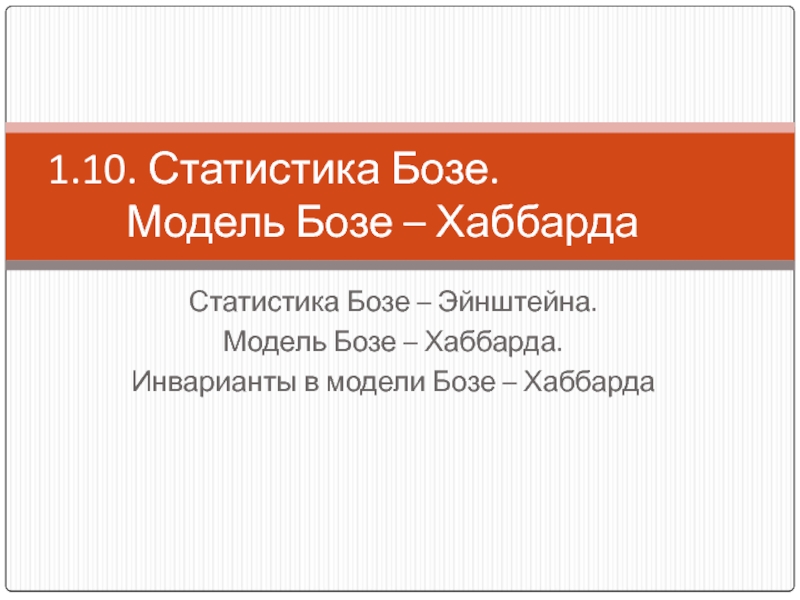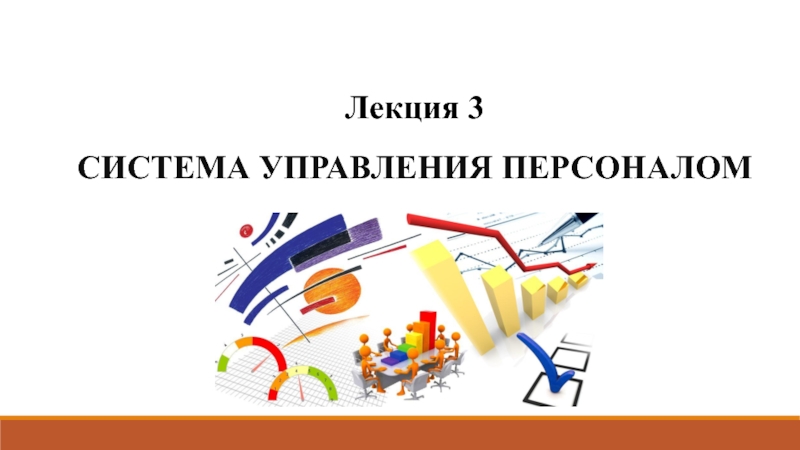Разделы презентаций
- Разное
- Английский язык
- Астрономия
- Алгебра
- Биология
- География
- Геометрия
- Детские презентации
- Информатика
- История
- Литература
- Математика
- Медицина
- Менеджмент
- Музыка
- МХК
- Немецкий язык
- ОБЖ
- Обществознание
- Окружающий мир
- Педагогика
- Русский язык
- Технология
- Физика
- Философия
- Химия
- Шаблоны, картинки для презентаций
- Экология
- Экономика
- Юриспруденция
Comparison of phraseological units with zoonyms in English, German and Russian
Содержание
- 1. Comparison of phraseological units with zoonyms in English, German and Russian
- 2. The Origin of Phraseological UnitsPhraseological units have
- 3. The Origin of Phraseological UnitsNative Phraseological UnitsThe
- 4. Слайд 4
- 5. Full equivalents
- 6. Full equivalents
- 7. Full equivalents
- 8. Full equivalents
- 9. Partial equivalents
- 10. Partial equivalents
- 11. Partial equivalents
- 12. Units that share the same meaning but are translated differently
- 13. Units that share the same meaning but are translated differently
- 14. Most popular zoonyms in GermanThe most popular
- 15. Most popular zoonyms in EnglishHorses since olden
- 16. Most popular zoonyms in RussianRussians mostly use
- 17. ConclusionThe zoonym “Dog” is popular in phraseological
- 18. Sources:https://cyberleninka.ru/article/n/zoomorfnye-obrazy-nemetskoy-i-russkoy-frazeologiihttps://cyberleninka.ru/article/n/semantika-zoonimov-vo-frazeologii-nemetskogo-i-russkogo-yazykovhttps://cyberleninka.ru/article/n/mezhyazykovaya-asimmetriya-frazeologizmov-nemetskogo-i-russkogo-yazyka-na-materiale-animalizmovhttps://cyberleninka.ru/article/n/funktsionalno-semanticheskie-osobennosti-frazeologizmov-s-animalizmami-kak-otrazhenie-kulturnoy-samobytnosti-nemetskogo-i-russkogohttps://cyberleninka.ru/article/n/lingvokulturologicheskie-osobennosti-poslovits-s-zoonimami-v-angliyskom-nemetskom-i-russkom-yazykahhttps://istina.msu.ru/publications/article/278890907/https://reallanguage.club/anglijskie-idiomy-o-zhivotnyx/http://grammar-tei.com/anglijskie-idiomy-s-nazvaniyami-zhivotnyx-animal-idioms/
- 19. Скачать презентанцию
The Origin of Phraseological UnitsPhraseological units have many peculiarities. They are considered anomalies of language. Their meanings cannot be predicted from the meaning of their constituents, and they have either partially
Слайды и текст этой презентации
Слайд 2The Origin of Phraseological Units
Phraseological units have many peculiarities.
They
are considered anomalies of language.
Their meanings cannot be predicted
from the meaning of their constituents, and they have either partially or fully transferred meanings. The origin of PU is different. Some are related to memorable events, some are political, others are religious.
Scientists identify native and borrowed phraseological units.
Слайд 3The Origin of Phraseological Units
Native Phraseological Units
The origin of the
majority of phraseological units is unknown, but they may reflect
traditions, memorable events, customs, and beliefs of native speakers.English: a black sheep.
German: die Katze aus dem Sack lassen.
Russian: медвежья услуга.
Borrowed Phraseological Units
These phraseologisms came from other languages.
English: every dog is a lion at home (from Italian).
German: Eulen nach Athen tragen (from Ancient Greek).
Russian: гадкий утенок (from English).
Слайд 14Most popular zoonyms in German
The most popular animal in German
phraseological units is a dog, because it was considered as
a reliable human companion and was an important part of human’s life.The use of zoonym “Pig” can be explained by the fact that pig breeding was one of the oldest types of animal husbandry in Germany.
Bears and Badgers were common in Europe, that is why they were used not only in phraseologisms but also in fairy tales and fables.
Слайд 15Most popular zoonyms in English
Horses since olden times were one
of the favorite animals among English people. England is also
deemed as home of horse races. It is second popular sport in England after football.Dogs and cats as the most popular pets were frequently used in English phraseological units too.
Lion in English culture was an embodiment of strength, power, bravery and honor.
Слайд 16Most popular zoonyms in Russian
Russians mostly use domestic animals or
pets in their phraseological units.
The zoonym “Wolf” is used to
represent “evil” and has a negative connotation. It is because wolf was always an enemy of peasants and villagers.Слайд 17Conclusion
The zoonym “Dog” is popular in phraseological units of all
languages under consideration.
German and Russian phraseological units have a lot
in common.German and English units have little in common.
The same animals can personify different traits (good or bad) in different languages, what proves that word perception in different cultures can vary.
